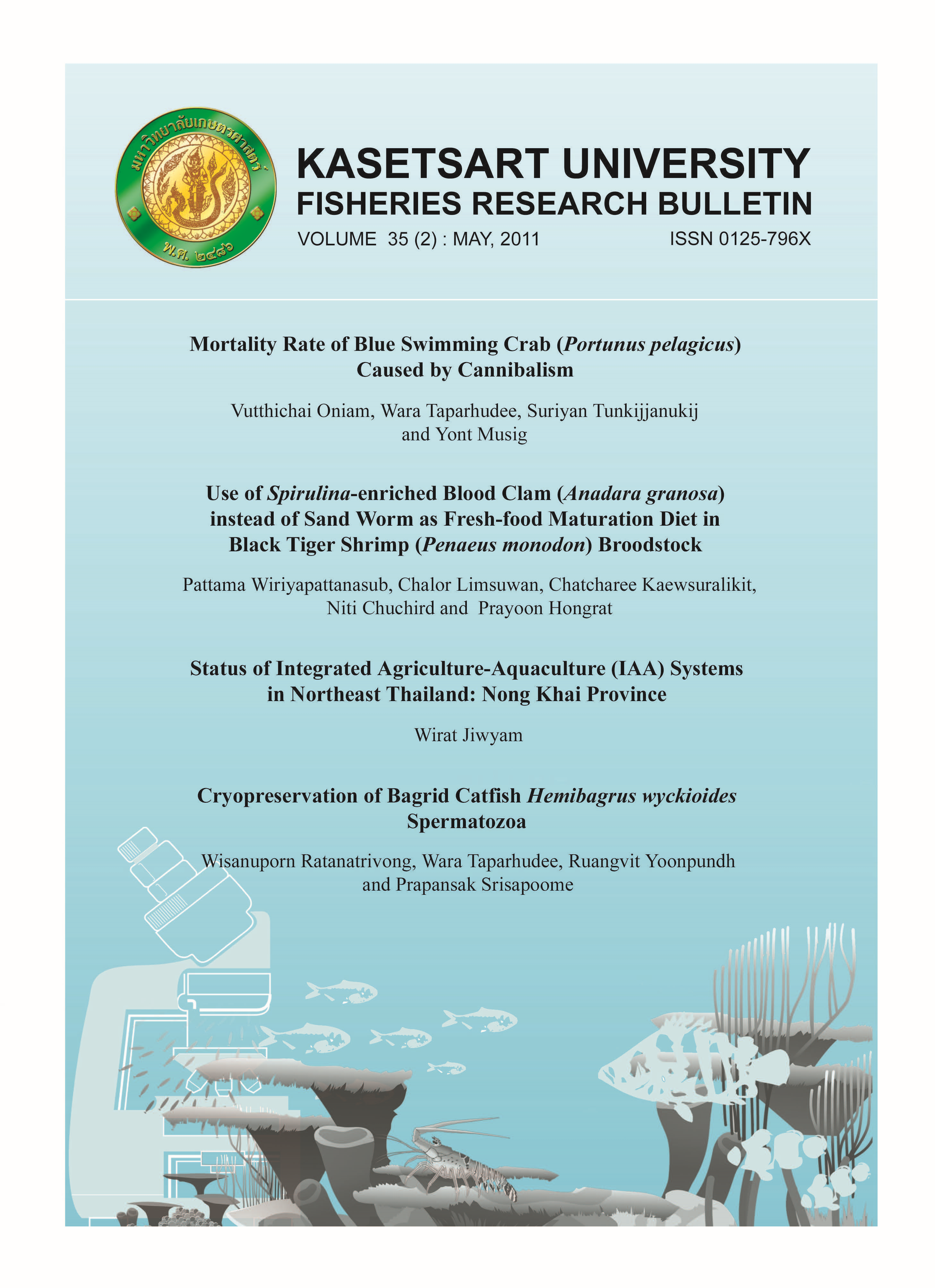Mortality Rate of Blue Swimming Crab (Portunus pelagicus) Caused by Cannibalism
Main Article Content
Abstract
Cannibalism in blue swimming crab (Portunus pelagicus) raised under simulated earthen pond conditions in 1.5 x 2.5 m2 concrete ponds at a density of 3 crabs/m2 was studied. The experiments were conducted using a completely randomized design (CRD). Three models were used, namely crabs raised without plastic net fences and shelter (control), crabs raised individually in 0.5 x 0.6 m2 plastic net fences at 12 fences/pond, and, crabs raised with 90° bent plastic plates (20 cm x 30 cm x 10 cm) as a shelter on pond bottom at 1 shelter/m2, with three replications per model. Results showed that mortalities of crabs caused by cannibalism were 0.00-21.42, 0.00 and 0.00-9.39%, respectively. Mortality from other factors was 0.00-6.48% in all treatments. This study confirms that during 30 to 45 days of culture, cannibalism is the main factor causing high mortality of crabs, and that the shelter on pond bottom plays an important role in reducing cannibalism (P<0.05). However, after 90 days of culture, other factors outweighed cannibalism as the major cause of crab mortality.


